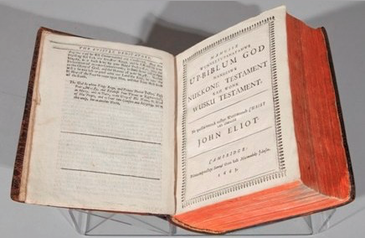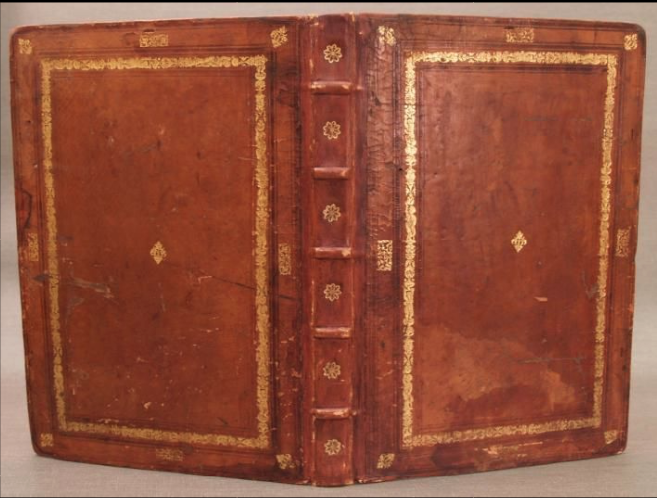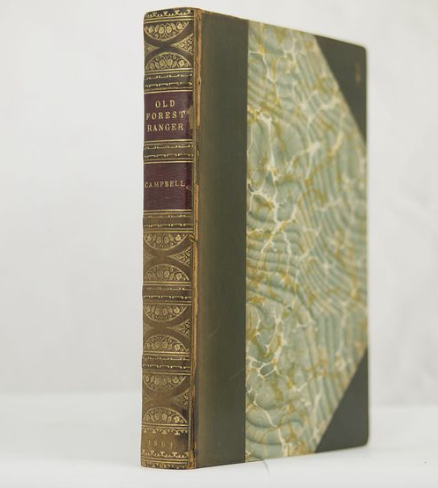|
In the mid 1700s, books became both more economical and more popular. This caused the movement of books from tables to shelves, upright, and with spines out (Maser 8). In the years between 1750 and 1760, a transition was made between books being a part of small libraries, often with few books stacked on tables, chests or shelves with their fore-edges (pages) visible, to large libraries, whose number of books necessitated the quick identification of a number of books (Maser 8). The trend was reflected in the bindings. Prior to 1750, books displayed decorated boards and plain spines. After the transition, bindings were decorated on the spines and plain boards were hidden amongst its shelved companions. After this point, the Industrial Revolution makes the process faster and more economic, however, it removes a large portion of the handmade aspects (Maser 19). In the 19th century, books become highly decorated with such things as acid staining and “sprinkling” (Crane 47). Techniques such as “rose paper doubleves” and “border gauffering” come into vogue (Maser 28). Colored, glossy and marble end papers soon follow. Mechanized stamping heralds intricate and complicated designs on the front and back covers (Maser 29-30). By 1850, experimental Victorian binding launches a style epitomize by highly decorated, highly unique and, often garish, bindings (Maser 19-32).
As is the case with many traditions, popularity, industrialization, and mass production reaches a wider audience but at the cost of personalized craftsmanship. Bibilography Burdett, Eric. The Craft of Bookbinding: A Practical Handbook. Vancouver: David and Charles Limited, 1975. Print. Crane, W.I.E. Bookbinding for Amateurs: Being Descriptions of the Various Tools and Appliances Required. New York: Charles Scribner's Sons, 1903. Print. E Walker et. AL, The Art of Book-Binding, Its Rise and Progress;A Descriptive Account of the New York Book-Bindery. New York: E. Walker and Sons, 1850. Print. “Eliot Indian Bible.” Digital Collections at the University of Illinois at Urbana-Champaign Library, UIUC Rare Book & Special Collections Library, 18 Feb. 2002, digital.library.illinois.edu/items/d9031410-0d93-0135-23f6-0050569601ca-6#?cv=0&r=0&xywh=-473%2C1968%2C2393%2C1355. How Its Made: Traditional Bookbinding. Narrator: Lynn Herzeg. Discovery Channel, 2013. Website Upload. Marten, John: Director. Traditional Bookbinding Techniques of “A Reformed Druid Anthology.”Independently Filmed, 2013. Website Upload. Maser, Frederick E. Book Binding in America: 1680-1910. Bryn Mawr: Bryn Mawn College Library, 1983. Print..
Matthew Jessie
11/15/2018 05:01:45 pm
It's nice to learn about the transition of bookbinding just before the Industrial Revolution. I don't think it is very well understood by most people today how craftsmanship and consideration were given so much weight before the days of mass production. I had never realized that there was such an evident timeline of transitions to the contemporary book form, nor that America had as much to do with that transition as it did. This research project is very informative.
Elizabeth Wheeler
11/15/2018 10:22:34 pm
It was nice to read about the importance of craftsmanship in bookbinding. It was something that I knew was important but you did a good job explaning it and clarifying some personal questions I have. I think the fact that we still have so many of these books just goes to show exactly how talented these bookbinders were for their work to still exsist today. Comments are closed.
|
Categories
All
|


